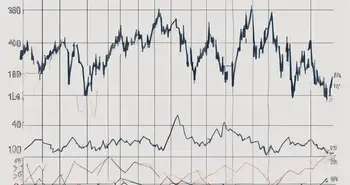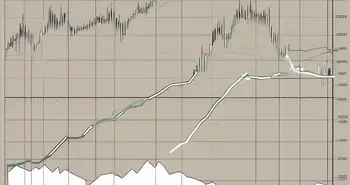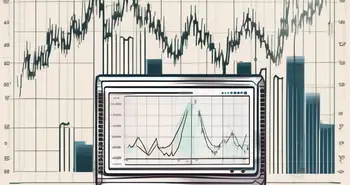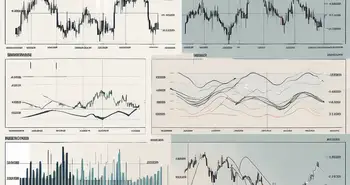Understanding Stock Indicators: A Complete Guide
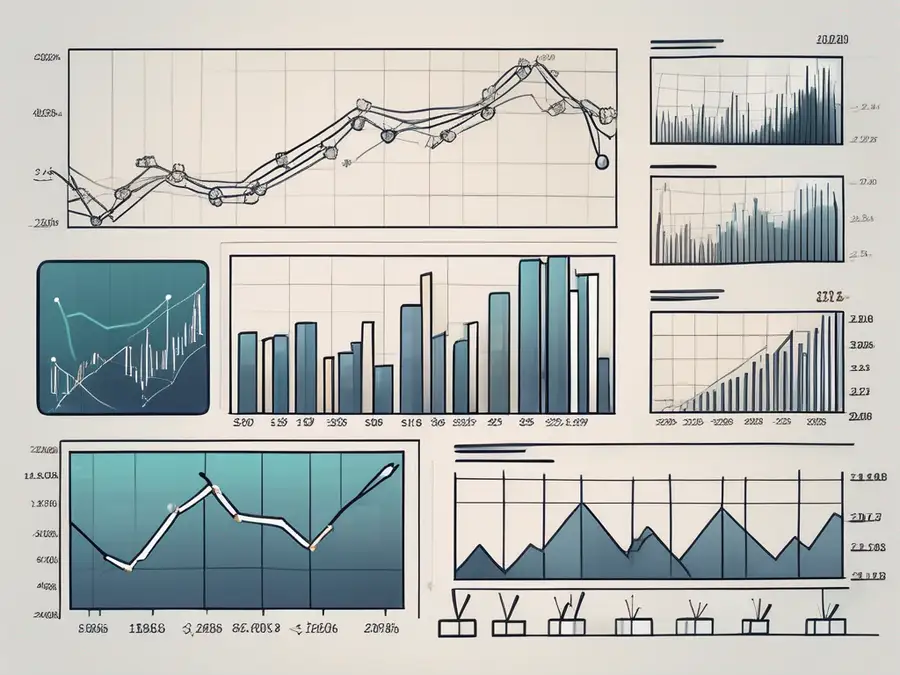
Stock indicators play a critical role in understanding the dynamics of the stock market. As an expert trader, I have relied on these indicators to make informed investment decisions and maximize profits. In this comprehensive guide, I will break down the basics of stock indicators, discuss different types, explain how to interpret them, and address common misconceptions surrounding their use.
Understanding the Basics of Stock Indicators
What are Stock Indicators?
Stock indicators are mathematical calculations or visual representations that provide insights into stock price movements and trends. They help traders and investors gauge market sentiment, identify potential trade opportunities, and make informed decisions based on historical data.
The Importance of Stock Indicators in Trading
Stock indicators are invaluable tools for traders as they offer a unique perspective on market trends and help identify potential entry and exit points. By analyzing indicators, traders can assess market strength, spot overbought or oversold conditions, and predict price reversals.
One commonly used stock indicator is the moving average. This indicator calculates the average price of a stock over a specific period of time. It smooths out price fluctuations and helps traders identify the overall trend of a stock. For example, a trader might use a 50-day moving average to determine whether a stock is in an uptrend or a downtrend.
Another important stock indicator is the relative strength index (RSI). This indicator measures the speed and change of price movements and helps traders identify overbought or oversold conditions. The RSI ranges from 0 to 100, with readings above 70 indicating overbought conditions and readings below 30 indicating oversold conditions. Traders can use the RSI to anticipate potential price reversals and adjust their trading strategies accordingly.
In addition to these technical indicators, fundamental indicators also play a crucial role in stock analysis. Fundamental indicators assess a company's financial health and performance, including factors such as earnings, revenue, and debt. By analyzing fundamental indicators, traders can gain insights into a company's value and make informed decisions about whether to buy or sell its stock.
Types of Stock Indicators
When it comes to analyzing the stock market, there are various indicators that traders rely on to make informed decisions. In addition to the trend indicators mentioned earlier, there are a few more types of indicators that can provide valuable insights into market behavior.
Trend Indicators
Trend indicators help identify the direction and strength of a market trend. They include moving averages, trendlines, and the Average Directional Index (ADX). These indicators are useful for traders following trends and seeking confirmation of price movements.
Momentum Indicators
Momentum indicators measure the speed and magnitude of price movements. Examples include the Relative Strength Index (RSI), Stochastic Oscillator, and Moving Average Convergence Divergence (MACD). These indicators help identify overbought or oversold conditions and potential trend reversals.
Volatility Indicators
Volatility indicators quantify the magnitude of price fluctuations and market volatility. Bollinger Bands, Average True Range (ATR), and the Volatility Index (VIX) are popular volatility indicators. Traders use these indicators to determine potential breakouts, reversals, or range-bound markets.
Volume Indicators
Volume indicators measure the number of shares or contracts traded in a security. Volume is a crucial component in technical analysis as it helps confirm price movements and identify significant market events. Examples of volume indicators include On-Balance Volume (OBV), Chaikin Money Flow (CMF), and Volume Weighted Average Price (VWAP).
While these indicators are widely used, it's important to note that no single indicator can guarantee accurate predictions in the stock market. Traders often combine multiple indicators to get a more comprehensive view of market conditions.
Additionally, it's worth mentioning that the interpretation of these indicators can vary depending on the trading strategy and the time frame being analyzed. Traders may use shorter-term indicators for day trading or longer-term indicators for swing trading or investing.
Ultimately, the key to successful trading lies in understanding how these indicators work, applying them in conjunction with other analysis techniques, and continuously adapting to changing market conditions. By staying informed and keeping a keen eye on these indicators, traders can enhance their decision-making process and potentially improve their trading outcomes.
Interpreting Stock Indicators
Reading Indicator Charts
When analyzing stock indicators, it is essential to understand how to read indicator charts. These charts display the indicator values alongside the price chart, providing visual insights into potential trends, reversals, or overbought/oversold conditions. By examining chart patterns and comparing them to historical price action, traders can make more informed decisions.
Understanding Indicator Values
The values generated by stock indicators are crucial for interpretation. For example, an RSI reading above 70 indicates overbought conditions, while a reading below 30 suggests oversold conditions. It is crucial to understand the specific criteria for each indicator and compare them against historical levels to assess market conditions accurately.
Using Stock Indicators for Investment Decisions
Timing the Market with Indicators
Stock indicators can help traders time their entries and exits more effectively. By combining multiple indicators and analyzing their signals, traders can improve the accuracy of their market timing. However, it is important to note that no indicator is foolproof, and incorporating other factors into your analysis is essential.
Evaluating Stock Health with Indicators
Stock indicators can also be used to evaluate the health of individual stocks or the overall market. By analyzing indicators such as the MACD or RSI, traders can assess whether a stock is in a bullish or bearish trend, helping them make better-informed investment decisions.
As an expert trader with years of experience, I have found indicators to be an invaluable tool in my investment journey. Nonetheless, it is important to understand that no single indicator guarantees success. Combining indicators with other analysis techniques and staying updated with market news and events is crucial for consistent profitability.
Common Misconceptions about Stock Indicators
Indicator Fallacies
One common misconception is that stock indicators always provide foolproof predictions. It's important to remember that indicators are based on historical data and do not guarantee future outcomes. They should be seen as tools for analysis rather than infallible predictors.
Overreliance on Indicators
Another mistake traders often make is overreliance on indicators without considering other market factors. While indicators provide valuable insights, they should be used in conjunction with other analysis techniques, such as fundamental analysis and market news, to make well-rounded trading decisions.
FAQ: Frequently Asked Questions
What are stock indicators?
Stock indicators are mathematical calculations or visual representations that provide insights into stock price movements and trends.
Why are stock indicators important?
Stock indicators are important as they help traders gauge market sentiment, identify potential trade opportunities, and make informed decisions based on historical data.
What are some common types of stock indicators?
Common types of stock indicators include trend indicators, momentum indicators, volatility indicators, and volume indicators.
How do I interpret stock indicators?
Interpreting stock indicators involves reading indicator charts, understanding indicator values, and analyzing their signals in conjunction with other market factors.
Can I rely solely on stock indicators for trading decisions?
No, it is recommended to use stock indicators in conjunction with other analysis techniques, such as fundamental analysis and market news, for more comprehensive trading decisions.
In conclusion, stock indicators are valuable tools for traders and investors to gain insights into market trends, identify potential opportunities, and make informed decisions. By understanding the basics, different types, and how to interpret indicators, traders can enhance their trading strategies and improve their chances of success. However, it is important to remember that indicators are not infallible, and combining them with other analysis techniques is key to consistent profitability in the stock market.
Ready to take your trading to the next level with the insights you've gained from stock indicators? Discover the innovative world of Morpher, where cutting-edge blockchain technology meets trading. With Morpher, you can trade stocks, cryptocurrencies, forex, and even niche markets like NFTs and collectibles, all with zero fees and infinite liquidity. Embrace the power of fractional investing, short selling without interest fees, and up to 10x leverage to amplify your trades. Experience the safety and control of a non-custodial wallet and the unique trading opportunities of Virtual Futures. Sign Up and Get Your Free Sign Up Bonus today to transform your investment journey with Morpher.

Disclaimer: All investments involve risk, and the past performance of a security, industry, sector, market, financial product, trading strategy, or individual’s trading does not guarantee future results or returns. Investors are fully responsible for any investment decisions they make. Such decisions should be based solely on an evaluation of their financial circumstances, investment objectives, risk tolerance, and liquidity needs. This post does not constitute investment advice.

Painless trading for everyone
Hundreds of markets all in one place - Apple, Bitcoin, Gold, Watches, NFTs, Sneakers and so much more.

Painless trading for everyone
Hundreds of markets all in one place - Apple, Bitcoin, Gold, Watches, NFTs, Sneakers and so much more.


